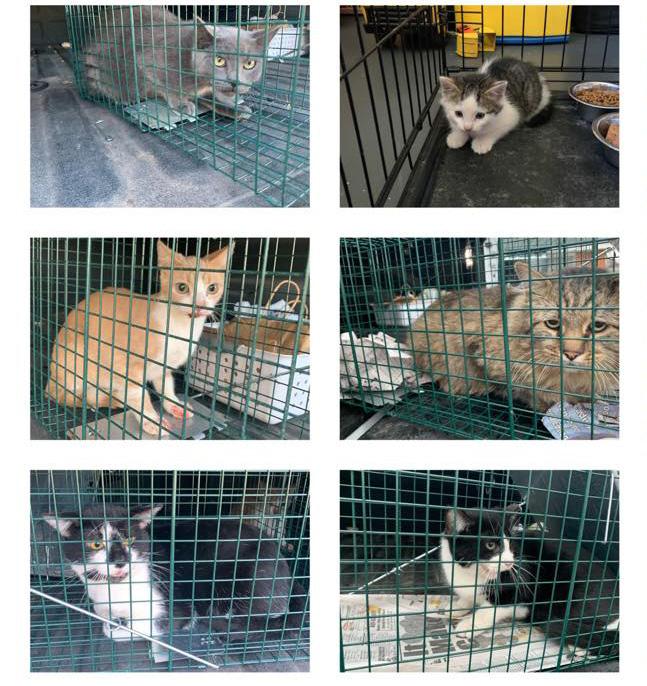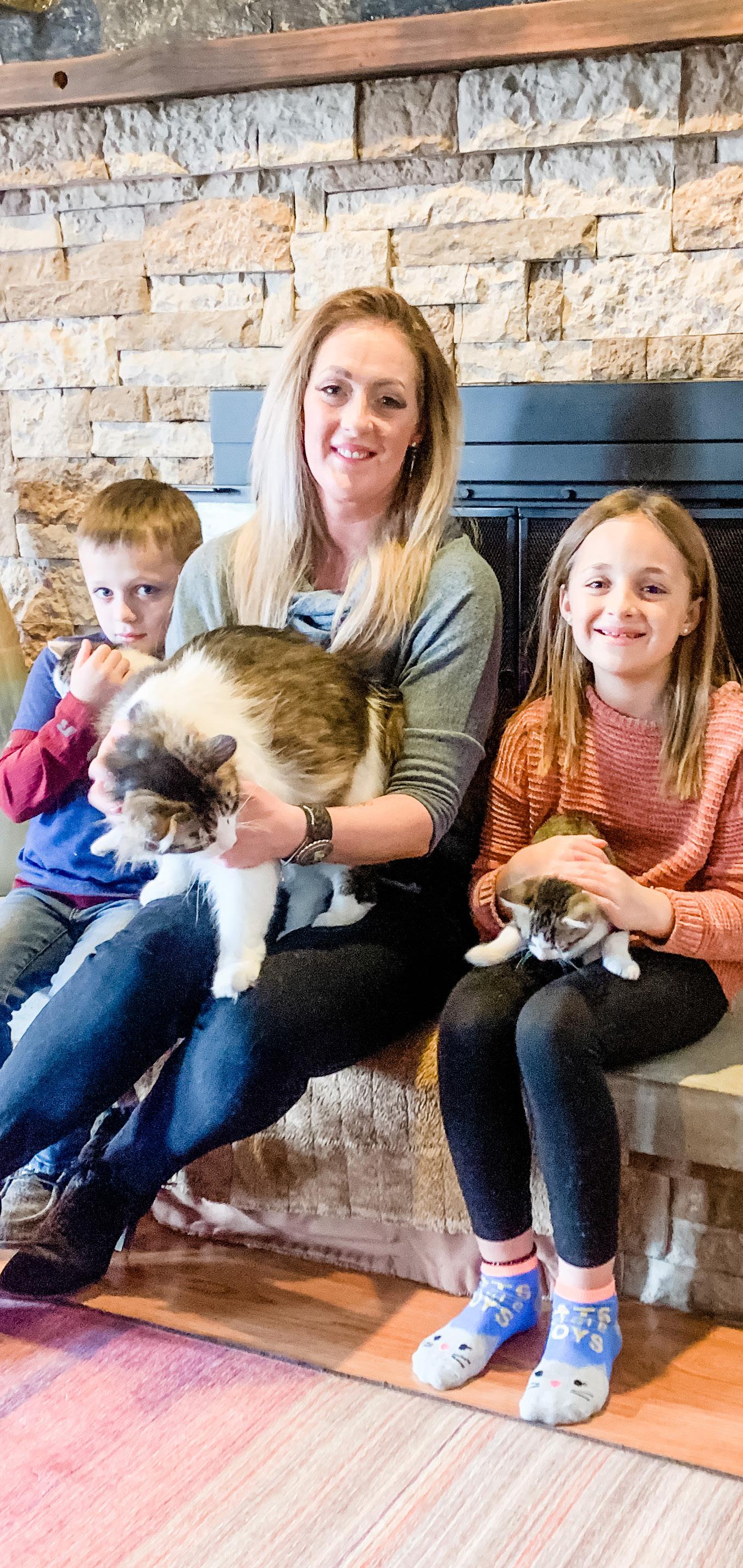
4 minute read
Fix-A-Feral
Northern Oklahoma Human Society’s Newest Program
Story by Jennifer Vaughan/Staff Writer Photos provided by Karlissa Archibeque
Advertisement
Can you tell me more about the Fix-A-Feral program? Northern Oklahoma Humane Society’s Fix-A-Feral program is designed to reduce shelter euthanasia, preserve scarce shelter resources and solve our community’s feral and stray cat overpopulation crisis through Trap-Neuter-Return (TNR).
What exactly is a “feral” cat? A feral cat is one that lives outdoors, is not socialized to people, avoids human contact and does not belong to anyone.
What is the ultimate goal of Fix-A-Feral? The desired outcome and ultimate goal of the Fix-A-Feral program is to permanently reduce the local community cat population through the use of TNR in order to eventually eliminate feral cat colonies.
Why is Trap-Neuter-Return the solution? TNR is the recommended method nationwide for controlling feral cat colonies. For over a century in the United States, the majority of animal shelter programs relied on a uniform approach to the management of both dogs and cats. However, the outcome was remarkably different for the two species. Dog euthanasia rates declined steadily while feline intake and euthanasia remained high. In recent years, however, TNR has been implemented widespread across the United States and proven to be effective.

Some of the local feral colony cats who have benefited from FixA-Feral’s program.



Karlissa Archibeque, Northern Oklahoma Humane Society Board Member and Committee Member for Fix-A-Feral, is pictured with her children, Kaycen and Kaylynn (left to right) (Photo by Jennifer Vaughan) Are the cats simply trapped, neutered and returned through Trap-Neuter-Return? With this TNR program, once they are trapped, they are then spayed or neutered, vaccinated for rabies, ear-tipped for a visual identifier of a sterilized feral cat (so they aren’t TNR’d again) and finally, returned to their original colony.
Is this really a problem in our community? Very much so. Ponca City has multiple feral cat colonies in local neighborhoods and at our grocery stores. Conservation biologists consider feral cats to be one of the worst invasive species on Earth. Because a female cat can become pregnant as young as 16 weeks of age and go on to have two or three litters a year, the feral cat population (and the problems associated with it) grows and perpetuates. In seven years, a single female cat and her kittens can produce 420,000 more cats. The city, as a whole, incurs higher animal control and shelter costs from the continual intake of feral cats and kittens.
I’m REALLY not a cat person. Is there any reason that I should feel compelled to support this program? In all actuality, this is precisely the program for you. The use of TNR will lead to permanent reduction of the local feral cat population by quickly stabilizing and reducing the colony by ending reproduction and removing kittens and socialized cats. Since the cats are no longer reproducing, the colony will gradually diminish in size. Some of the benefits of Fix-A-Feral’s program include less smell, less noise, disease reduction and rodent control. Neutered male cats will mark their territory less, thus cutting down on the smell, and of course with fewer cats there will be less smell overall. Neutered male and spayed female cats will make less mating noises and male cats will fight less, all reducing the noise nuisance. In fact, research indicates that animal control receives few feral cat complaints when TNR is implemented in a community. There are plenty of ways you can support Fix-A-Feral’s goal to eliminate feral cat colonies in our community without any hands-on involvement.
How can I help? In order for this program to be sustainable and effective, we need the help, support and collaboration of the community as a whole. This is not just a “cat” problem. This is a community problem. We need the community to come together and support implementing TNR locally. Fix-A-Feral is always looking for additional volunteers to assist with trapping, transporting, fostering and coordinating fund-raising, marketing, social media, record keeping, education and community efforts. There is also a great need for veterinarian partners to donate or discount medical procedures, as well as donations from individuals to cover those costs
Thank you to our Board Members and Volunteers
Ponca City’s local Fix-A-Feral program wouldn’t be possible without the many people who volunteer their time and resources. Thank you to everyone who works so diligently to make our community a better place!
COMMITTEE MEMBERS: Ashley Villines – Executive Director of NOKHS Suzanne Boettcher – NOKHS Board Member Karlissa Archibeque – NOKHS Board Member Larry Bittman – Communications Liaison
VOLUNTEERS: Aeryka Lawson Allison Watson Amanda Hill Angela Whitfield Donna Al Balas Hannah Hayes Jessica Free Kimberly McCall Kristen Siler Payton Wooten Rhea Jones Shelly Nagel Tamara Behara

